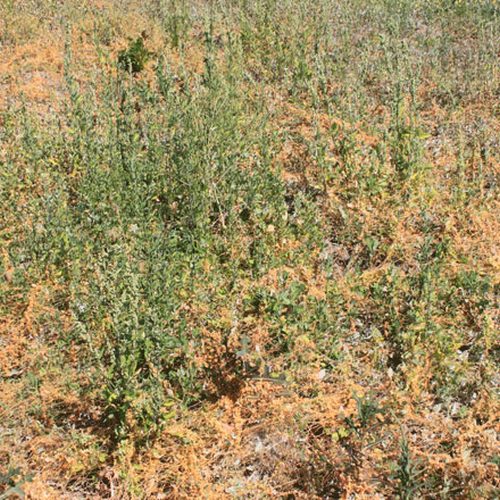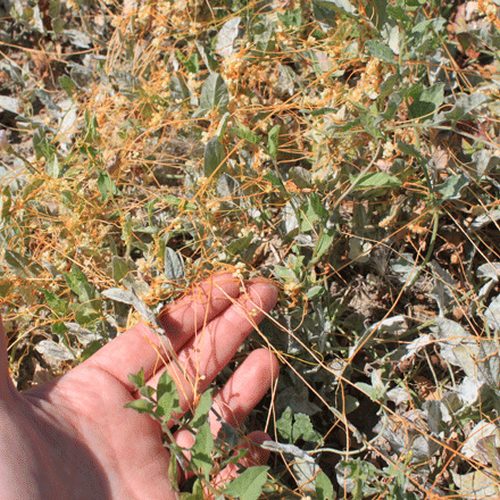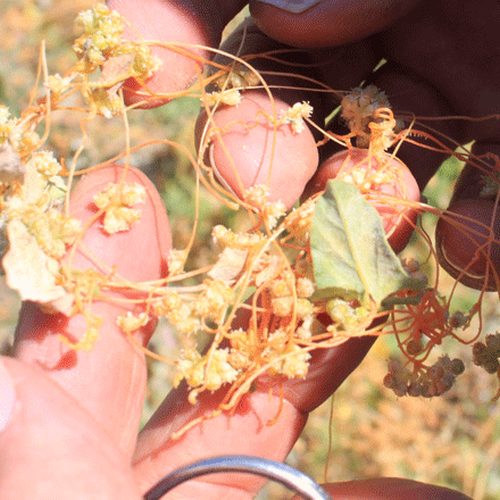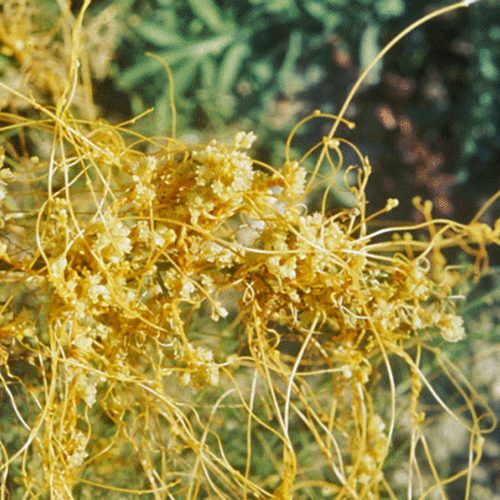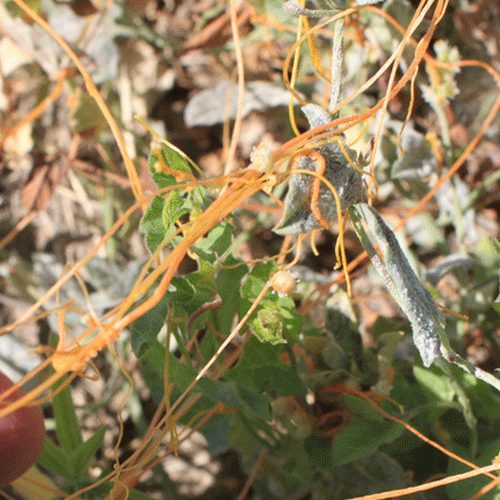Smoothseed Alfalfa Dodder
Cuscuta approximata
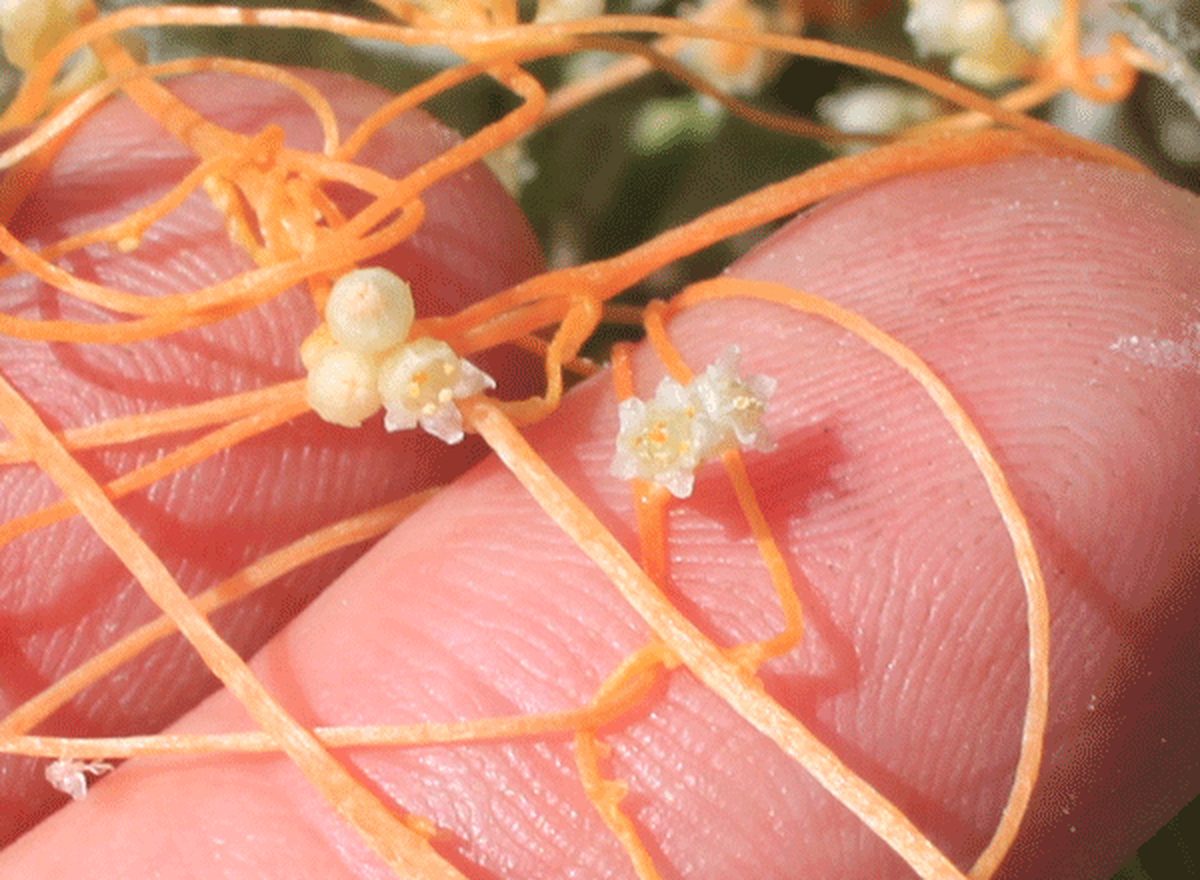
Family: Cuscutaceae
Weed class: C
Year Listed: 1989
Native to: Europe, Asia and Northern Africa
Is this Weed Toxic?:
not known to be
Why Is It a Noxious Weed?
Dodder is parasitic and damaging to leguminous crops, especially alfalfa and clover. It also impacts vegetable and forage crops, ornamentals, native plants, and weeds. Dodder can suppress or kill the host plants.
How would I identify it?
General Description
Smoothseed alfafa dodder is an annual, parasitic plant that is yellow or orange or reddish. It twines about other plants and obtains nourishment from them by means of suckers.
Flower Description
The flowers are in small (2 to 3 mm long), yellowish, and somewhat fleshy dense clusters.
Fruit Seed Description
The seeds are about 1/16 inch long, irregularly round with a rough texture. Dodder seeds resemble alfalfa seeds, but they can sometimes be distinguished from alfalfa seeds when they cling together in small clusters.
Where does it grow?
Dodder is found in older farming areas, roadsides, ditches, and fields. Please click here to see a county level distribution map of smoothseed alfalfa dodder in Washington.
How Does it Reproduce?
Dodder is an annual plant that reproduces by seed. Over 16,000 seeds are produced per plant.
How Do I Control It?
Mechanical Control
It is easier to prevent dodder establishment, than to eradicate it. When dodder is confined to small areas, it is recommended to cut it, let it dry, and burn it.
Cultural Control
Rotate dodder infested fields with grasses, which are immune to dodder and will not be a host crop. Prevent new infestations by cleaning combines and farm equipment. Hay with dodder seed should only be used in feed lots.
Herbicide Control
Please refer to the PNW Weed Management Handbook, or contact your county noxious weed coordinator.
For More Information
See our Written Findings for more information about smallseed alfalfa dodder (Cuscuta approximata).



